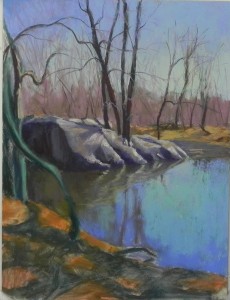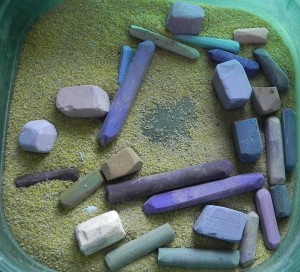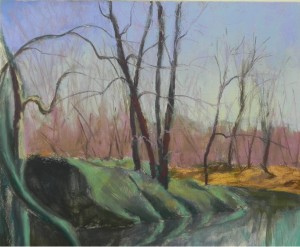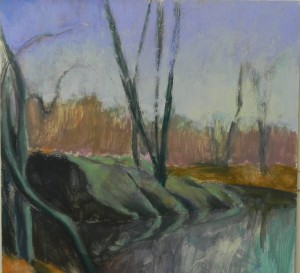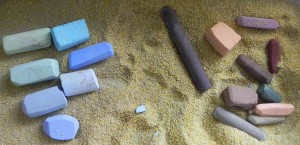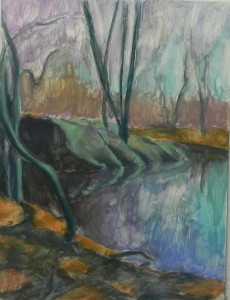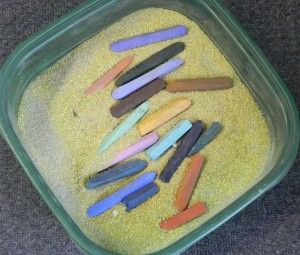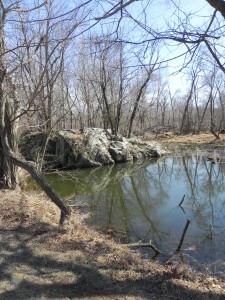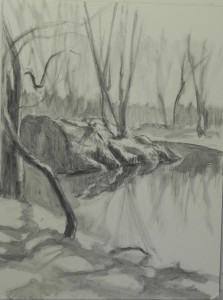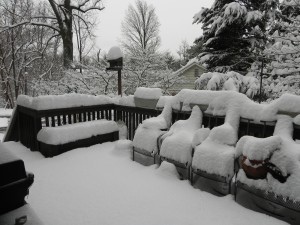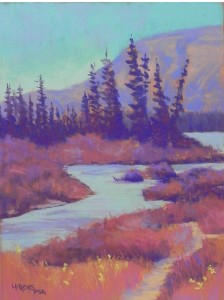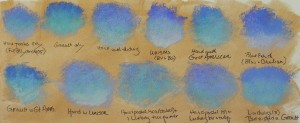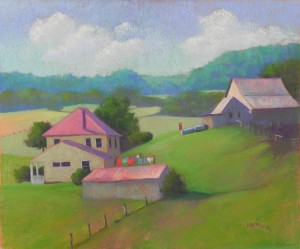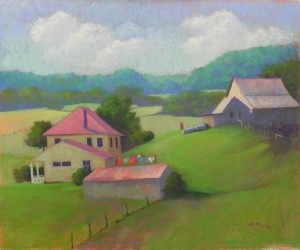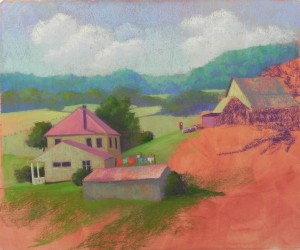I’ve just worked on the rocks and more quickly put in some of the beautiful colors in the water. None of this is done. It’s interested, looking at the image as I’m typing this, at how “gray” the rocks turned out! I used grayed colors for sure. They will be refined further, but I need to complete the water and reflections to get a sense of their color. I started them out with various violets, but soon added grayed blues. They didn’t really work at all until I started adding some warmer browns and a bit of very light grayed yellow. I can see that one area is now reading like a tree reflection and doesn’t work because it doesn’t continue.
But now it’s time for lunch and a break. And, to be honest, I’m really rather glad that I’m not doing this painting in front of my class!! It takes a lot of careful thought and selection of color. I was concerned that I was doing something a little too complex. But who knows, mayber the interaction would have made it a lot better! We’ll see.

